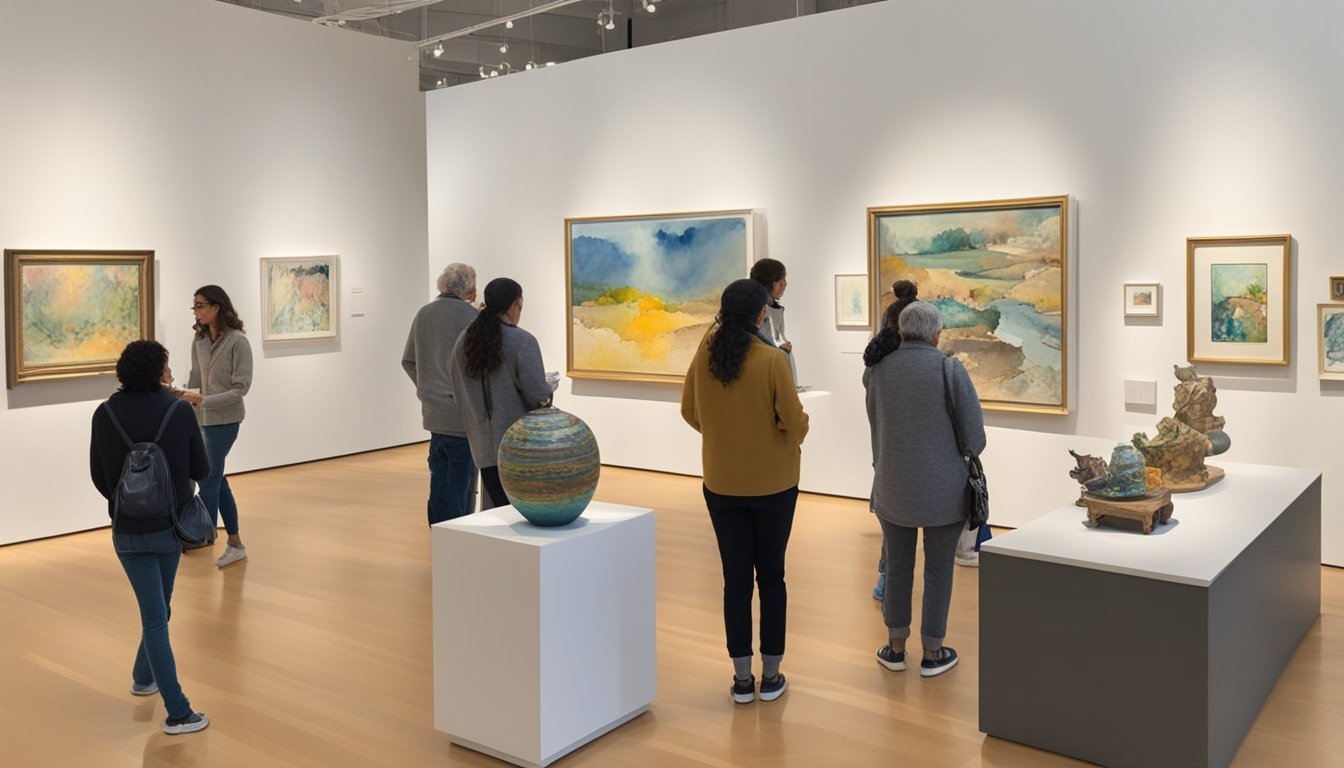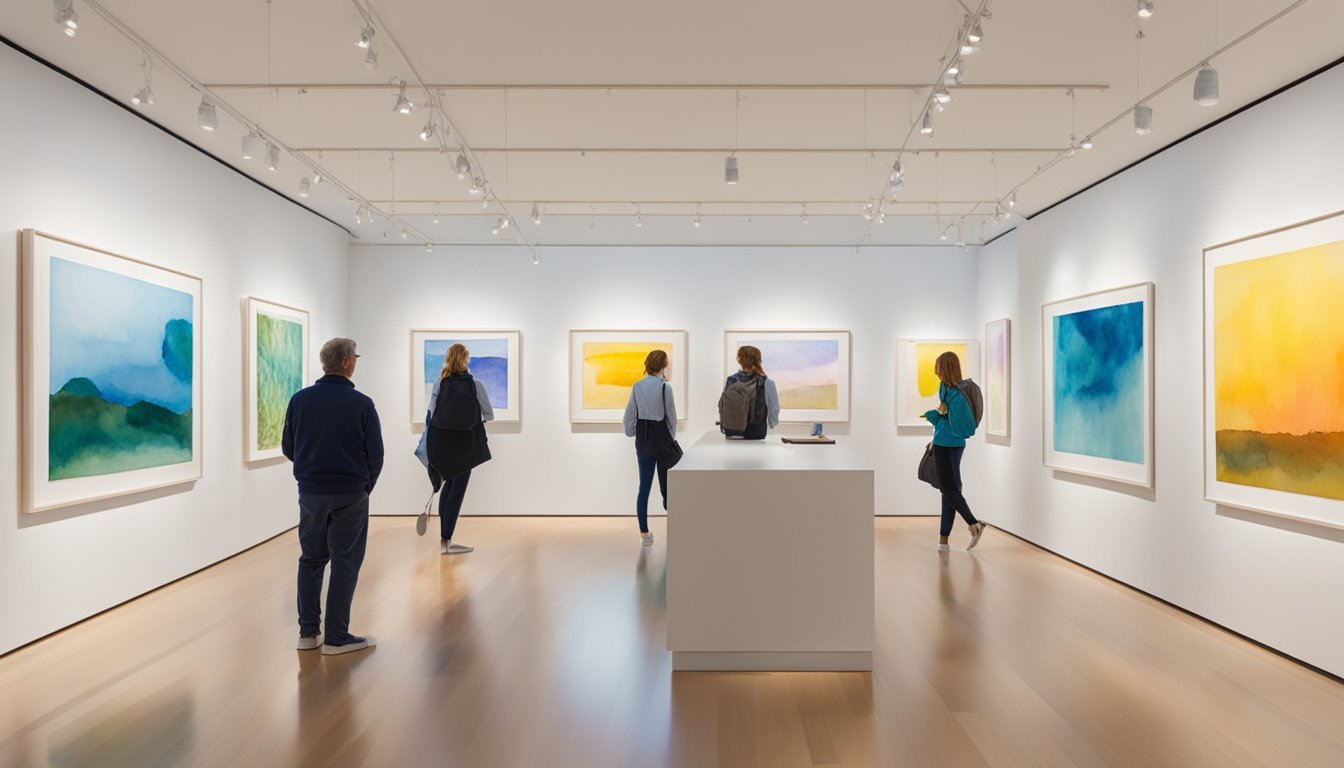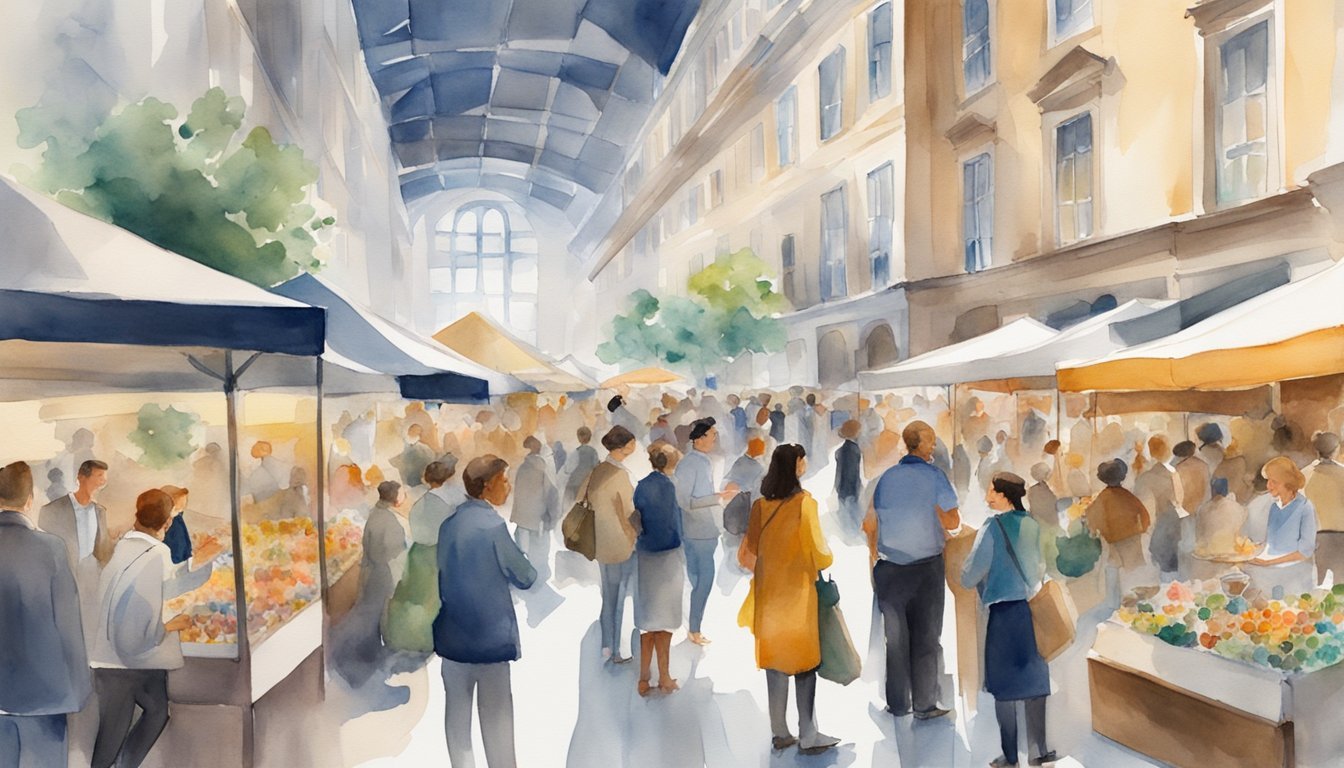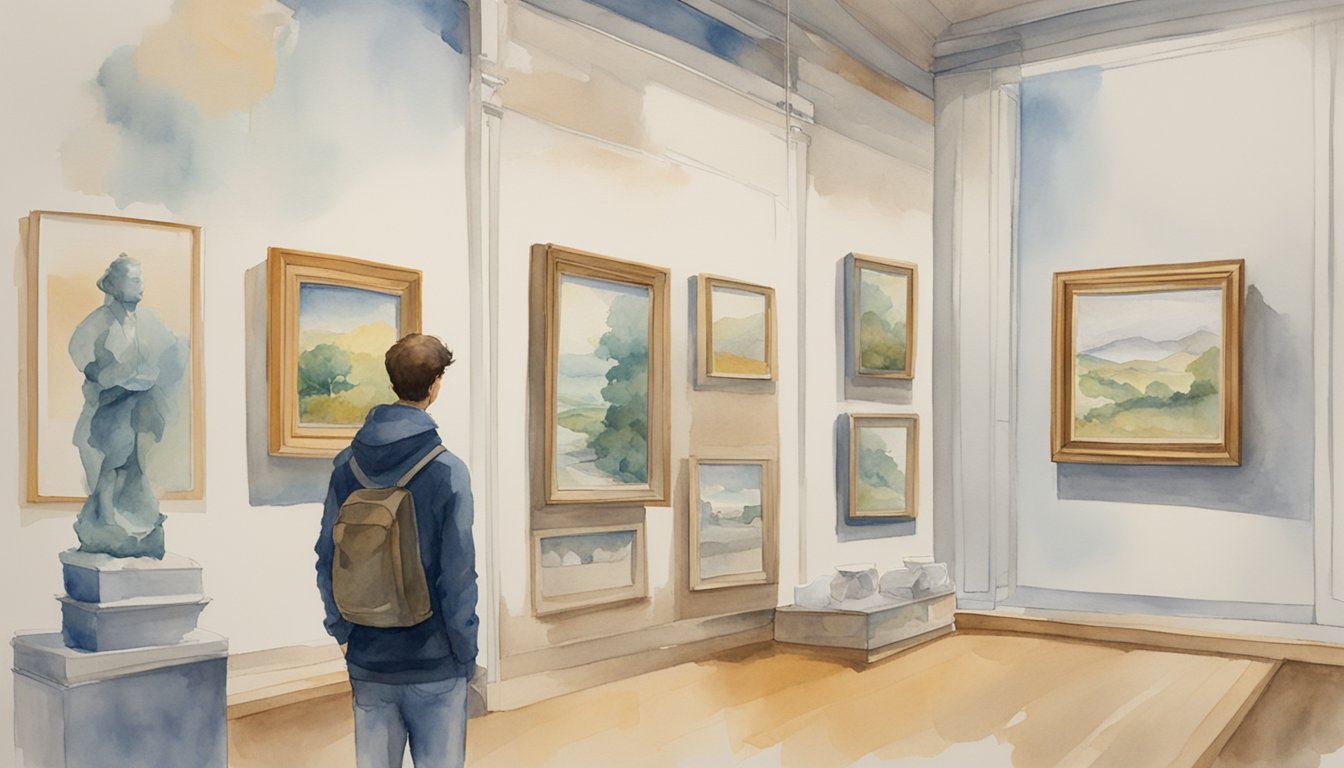How to Invest in Art: 7 Tips to Get Started

Investing in art can be a rewarding way to diversify your portfolio while also enjoying beautiful pieces.
Whether you’re drawn to paintings, sculptures, or other types of art, there’s something out there for every taste and budget. Learning how to invest in art can open up new opportunities for financial growth and personal enjoyment.

You don’t have to be a millionaire or an art expert to start investing in art.
Many beginner-friendly strategies and resources are available to help you get started.
With some research and careful planning, you can make smart investments that may appreciate over time.
1) “Art is not what you see, but what you make others see.” – Edgar Degas
Edgar Degas once said, “Art is not what you see, but what you make others see.” This idea is simple yet deep.
When investing in art, think about how a piece speaks to you and others.
It’s not just about what you see, but the emotions and thoughts it can evoke.
Understanding this quote can help you assess art pieces better.
Look for works that tell a story or provoke a reaction.
These pieces often hold more value and can attract more interest in the art market.
When you view art through Degas’ lens, you might start appreciating subtle details.
The way colors blend, how light interacts, and even the smallest brush strokes can all contribute to what the artist wants you to feel and see.
Investing in art becomes more exciting when you think about its impact.
The right piece can spark conversations, inspire others, and even change perspectives.
This makes it more than just a decorative object; it’s a powerful medium of communication.
Exploring art with this mindset can also open up new artist discoveries.
You might find emerging artists whose work speaks loudly to you and others.
Investing in such artists early can be rewarding both emotionally and financially.
By embracing Degas’ philosophy, you’re not just collecting art; you’re cultivating experiences and emotions.
This approach can make your art investment journey meaningful and fulfilling.
Remember, art is a shared experience, and what you invest in can shape what others see and feel.
2) Start with Prints Before Original Pieces
If you’re new to art investing, it’s smart to start with prints.
Prints are often more affordable than original pieces, making them a great entry point.
Buying prints allows you to explore different artists without spending a lot of money.
You can learn what styles and themes you like.
Prints are usually produced in larger quantities.
This means you can find high-quality works by well-known artists at a fraction of the price of original works.
It’s less risky for beginners.
When you buy prints, you also gain experience in the buying process.
You’ll learn how to evaluate art, handle transactions, and build relationships with galleries and sellers.
This knowledge is useful when you decide to move on to original pieces.
Many prints still appreciate in value.
Some limited-edition prints can become valuable over time.
For example, a photograph by Ansel Adams can fetch high prices.
This provides an opportunity for both enjoyment and investment growth.
Starting with prints can build your confidence.
As you become more familiar with the art market, you’ll feel more comfortable making bigger investments.
Plus, having a collection of prints can be a solid foundation for your future art collection.
It’s a way to begin building your portfolio without a huge upfront cost.
So, if you’re considering investing in art, start small with prints.
It’s a smart, economical way to dip your toes into the art market.
3) Follow Emerging Artists on Social Media

Start by following artists on platforms like Instagram and Twitter.
These are great places to see their latest works and get updates on exhibitions.
Social media helps you discover artists early in their careers.
You can connect with them directly, ask questions, and learn about their creative process.
Pay attention to what they share.
Posts about upcoming shows or artist residencies can give you clues about their potential.
Engaging with their content by liking and commenting will also help build a relationship.
This can be valuable when considering future purchases.
Check out artist hashtags and follow art community accounts.
They often highlight new and exciting talent.
By staying active on social media, you’ll keep your finger on the pulse of the emerging art scene.
4) Visit Local Galleries and Exhibitions

One great way to start investing in art is by visiting local galleries.
These spaces often showcase emerging artists whose work can be both affordable and promising.
Exhibitions are another excellent source for discovering new art.
They allow you to see many pieces from different artists in one place, giving you a broader range of options.
At galleries and exhibitions, you can talk directly to the artists or gallery owners.
This interaction can provide valuable insight into the art and its potential for investment.
Local events also offer the chance to see the art in person.
This is crucial because seeing a piece online doesn’t always capture its true essence or the details that might affect its value.
Besides, going to these events helps you stay updated on current trends in the art world.
You’ll see what kinds of art are gaining popularity and which artists are making waves.
Make it a point to visit galleries and exhibitions regularly.
This routine builds your knowledge and helps you develop an eye for art that holds investment potential.
Don’t forget to explore smaller, lesser-known galleries too.
Sometimes, these places feature hidden gems that haven’t been discovered by the wider market.
Remember, investing in art is not just about the financial aspect.
It’s also about enjoying and appreciating the pieces you choose to buy.
So, take your time, explore, and find what resonates with you.
5) Join Art Collector Forums

Joining art collector forums is a great way to learn more about art investment.
These forums are full of people who share your interest and can offer valuable advice.
You can ask questions, share your experiences, and get feedback from others.
This can help you make better decisions when buying art.
Moreover, these forums often have discussions about current trends and artists.
Keeping up with these conversations can give you an edge in the art market.
Forums are also a great place to find out about upcoming events, such as exhibitions and auctions.
Attending these events can give you more insight into the art world.
In addition to learning, you can network with other collectors.
Building relationships with experienced collectors can open up new opportunities for you.
Some popular forums include Artsology’s forum and the Art Collector Guide.
These platforms have active communities willing to help newcomers.
Remember, participating regularly in these forums is key.
The more active you are, the more you will learn and benefit from the community.
6) Consider art investment funds
Art investment funds are a way to invest in art without needing to buy individual pieces yourself.
These funds pool money from many investors to purchase various artworks.
They are managed by professionals who handle the buying and selling.
You can think of this like investing in a mutual fund, but instead of stocks, you’re investing in art.
This can be a good option if you don’t have the time or expertise to select individual pieces.
These funds often focus on high-value artworks and collectibles.
This can include paintings, sculptures, or even digital art.
It’s a less hands-on approach, so you won’t have to worry about the storage and care of the art.
Plus, it allows you to diversify your investments across multiple art pieces.
Many art funds are geared towards accredited investors, but some are open to anyone.
If you’re interested, check out different platforms that offer access to these funds.
For more details, you can read about how to invest in art.
Research is key when selecting an art fund.
Look at the fund’s track record, the expertise of its managers, and the types of art it invests in.
This can help you make a better-informed decision.
Art investment funds can be a smart way to enter the art market, offer potential returns, and diversify your investment portfolio without direct ownership.
7) Be Aware of Market Trends

Keeping an eye on market trends is key when investing in art.
Trends can help you decide which pieces might appreciate in value.
Look for emerging artists who are gaining popularity.
Follow art market reports and auction results.
Resources like the UBS Global Art Market report can provide valuable insights into sales and growth.
Use online platforms.
Websites like Masterworks let you see popular artists and trends.
They also allow you to invest fractionally in expensive artwork.
Attend art fairs and exhibitions.
These events are great for spotting trends and networking with other collectors and experts.
Pay attention to the pieces that generate the most buzz.
Social media can also be a useful tool.
Follow galleries, artists, and art investment forums.
Platforms like Instagram often highlight trending artists and popular works.
Keep your ear to the ground.
Talk to gallery owners, curators, and other art investors.
They can provide insights into what’s hot in the market and what to avoid.
By staying informed and connected, you can make smarter investment decisions.
Understanding the Art Market
Getting a good grasp of the art market can help you make better investment decisions.
Knowing the types of art and what factors influence the market is essential.
Art Movements and Styles
Art movements and styles are important to know because they impact the value of artworks.
Some well-known movements include Impressionism, Modernism, and Abstract Expressionism.
Impressionist pieces from artists like Monet or Renoir are highly valued.
Modernist works by Picasso or Kandinsky are also sought after.
Understanding these styles helps you identify valuable pieces.
Digital art and NFTs are gaining popularity.
Platforms like NFT marketplaces offer unique digital works.
Keeping up with trends in both traditional and digital art can give you an edge.
Important Art Market Factors
Several factors influence the art market.
Provenance (the history of ownership) is crucial.
A well-documented provenance can increase a piece’s value.
Auction results also impact prices.
Big sales at Sotheby’s or Christie’s can set market trends.
You can track these through auction house websites and art market reports.
Art funds and fractional shares make investing easier.
Platforms like Maecenas and Masterworks let you invest with smaller amounts.
This diversification can reduce risks.
Economic conditions affect the market as well.
During economic downturns, art prices may drop.
Conversely, a strong economy can boost the market.
Thus, keeping an eye on the broader economy is helpful.
By understanding these factors, you’ll be better equipped to navigate the art market and make informed investment choices.
Finding Art to Invest In

Discovering the right art to invest in involves being able to identify authentic art and being aware of emerging artists who may rise in popularity and value.
Identifying Authentic Art
When you invest in art, authenticity is key.
You should start by visiting well-known galleries and auction houses.
These places often sell art with proper documentation and provenance, proving the piece is genuine.
Always ask for certificates of authenticity or ownership history.
This paperwork helps verify the background and legitimacy of the piece.
Consider hiring an art appraiser to evaluate the work before purchasing.
They can provide a professional opinion on the artwork’s authenticity and value.
Another good practice is to familiarize yourself with the artist’s signature and style.
Comparing the art to authenticated works can help spot inconsistencies.
Online resources and databases can be useful, but always cross-reference information to avoid mistakes.
Spotting Emerging Artists
Investing in emerging artists can offer significant returns if their work gains recognition.
Start by attending graduate shows and small gallery events where new artists often display their work.
Follow art publications, blogs, and social media channels that highlight up-and-coming artists.
These platforms can be excellent sources for discovering fresh talent.
Networking with art community members, such as curators, critics, and other collectors, can provide valuable insights on which artists to watch.
Focus on artists who receive awards or feature in reputable exhibitions.
These accolades often signal potential for future growth.
Instead of choosing based solely on potential financial return, invest in art that resonates with you.
Personal connection can sometimes be a good indicator of broader appeal.
Frequently Asked Questions
Here’s some practical advice to get you started on building an art collection.
You will find tips on buying quality artwork, budgeting, and avoiding common beginner mistakes.
What steps should a newbie take to start an art collection?
Start with prints before original pieces.
They are more affordable and can help you get a feel for the art world.
Follow emerging artists on social media to discover new talent and trends.
Visit local galleries and exhibitions to see art up close and meet gallery owners.
Are there any tips for spotting a promising art investment?
Look for unique styles and read reviews.
Pay attention to the artist’s following on social media.
A growing fanbase can be a good indicator of future value.
Attend art fairs and speak with experts to get insights.
Can you share some advice on where to find quality artwork for newcomers?
Visit local galleries and exhibitions.
These places often showcase both established and emerging artists.
Online platforms and art collector forums are also great resources for finding and discussing quality works.
How do you determine the right budget when stepping into the art market?
Decide how much you are willing to spend initially.
Consider starting with smaller, less expensive pieces and gradually increasing your budget as you become more confident.
Keep in mind additional costs, like framing and insurance.
What are some common pitfalls to avoid when purchasing art?
Avoid buying on impulse.
Take your time to research the artist and the piece you are interested in.
Steer clear of artworks sold without proper documentation or provenance.
This can be crucial for future resale value.
How important is it to understand an artist’s background before investing?
Knowing an artist’s background can provide context for their work and help gauge the potential for appreciation.
Research their education, past exhibitions, and current reputation in the art world.
This information can be valuable for making informed decisions.

